Yesterday we got the chance to visit Bo-Kaap, a neighborhood in Cape Town, for a tour and cooking lesson. Bo-Kaap originated back in the late 1700s as a neighborhood of rental houses for slaves from Malaysia, Indonesia, and other African countries to lease. When under the leasing rules, all houses had to be painted white. When this rule was eventually changed, the residents were able to purchase the houses and claim ownership. They celebrated by painting the houses various bright colors as a way for them to express their freedom.

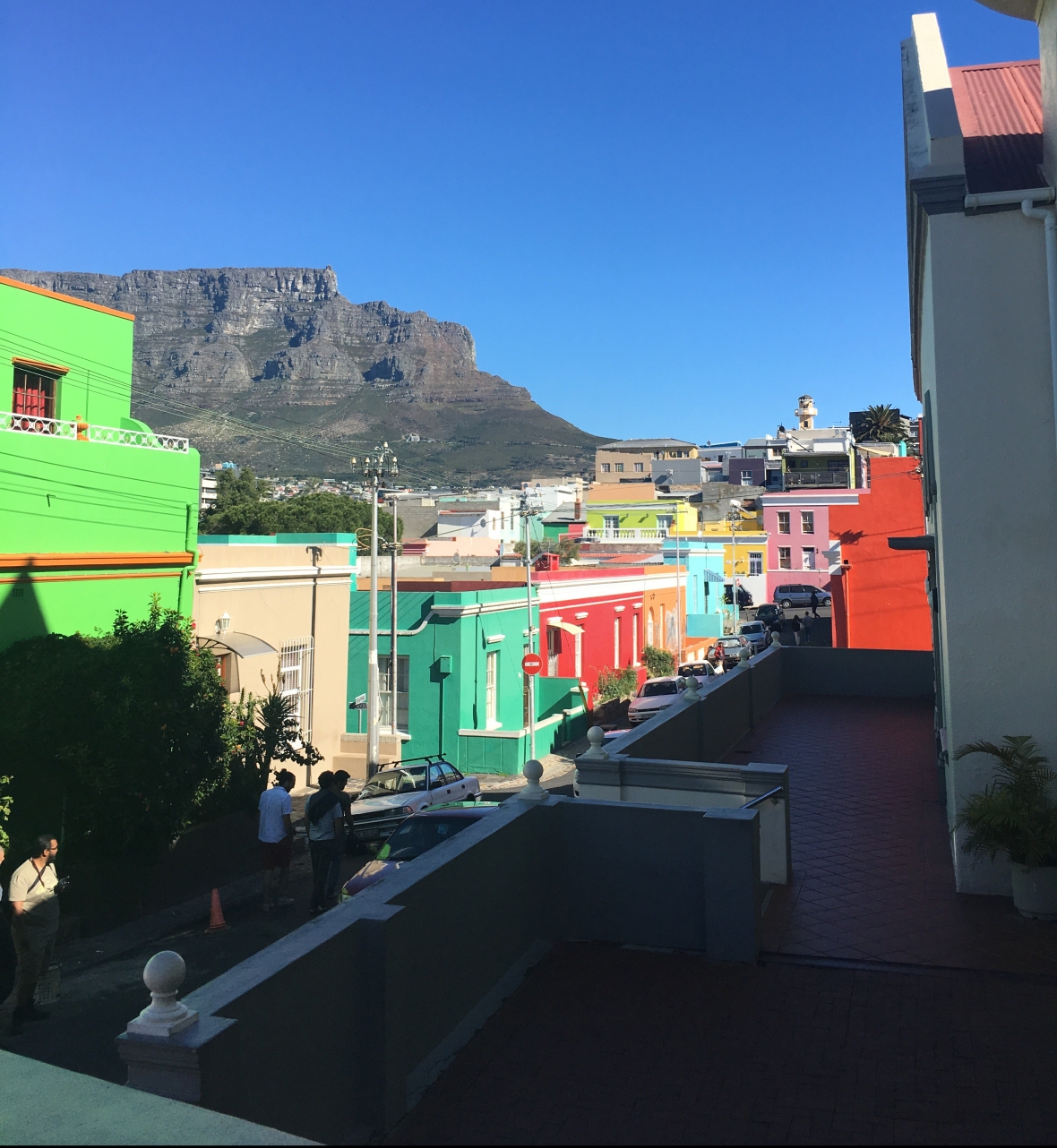
We met our tour guide, Zayed, at his house and he walked us around the neighborhood to give us a chance to see all of the vibrant, colorful houses and explain some of the history of Bo-Kaap. It’s a very beautiful and unique neighborhood. Zayed explained that the neighborhood is still mainly inhabited by people of Malaysian, Indonesian, or African descent, but that it is becoming a place that White South Africans and Europeans are starting to move into. Because of the brightly colored houses, location, and exciting culture of the area, the housing taxes and prices are increasing drastically, making it harder for the families that have lived there for generations to afford their houses. This is causing these families to have to sell their houses and move out of the neighborhood, which is a heartbreaking reality. In addition, there has been an increase in new development in the area, which takes away from the traditional Bo-Kaap styled homes. The residents are trying to have the neighborhood designated as a historical and cultural neighborhood in order to prevent new developments, but so far the government has not done anything about it. Soon plans will start to build a 19 story hotel in the Bo-Kaap area, which they are trying to put an end to by reasoning with the government. Hopefully they will be able to declare Bo-Kaap as a historical neighborhood before breaking ground on the hotel project.
After walking around and looking inside one of the corner stores, Zayed brought us back to his house where we began a cooking class! The class was led by his wife who taught us how to make different Cape Malay style dishes. We started off with chicken curry using various spices. What makes this chicken curry specific to Cape Malay is the group of spices called the Mother-in-Law or Father-in-Law masala. The Mother-in-Law is apparently very hot, so we used the Father-in-Law in our curry. The curry included the spices, onions, tomatoes, potatoes, lemon juice, and chicken. We mixed it and let it sit while we made the rest of the food.
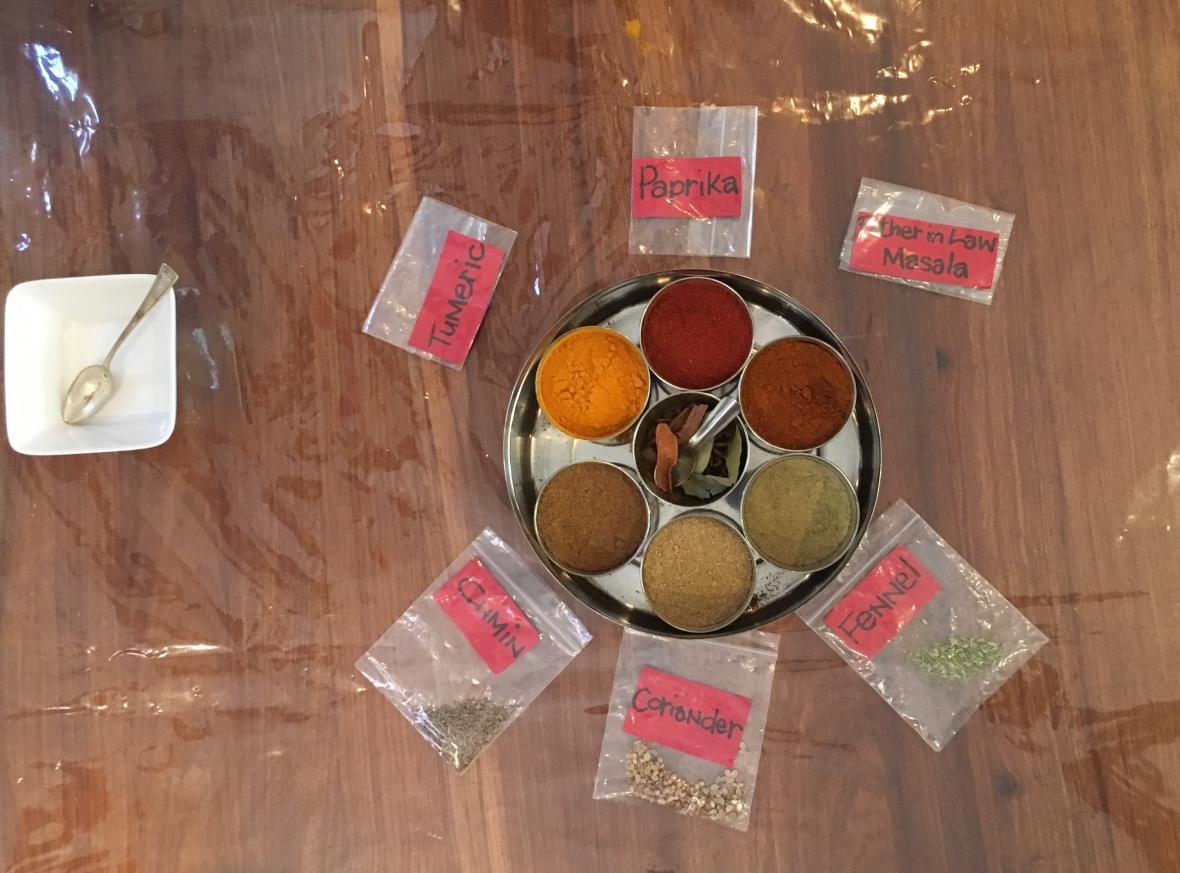
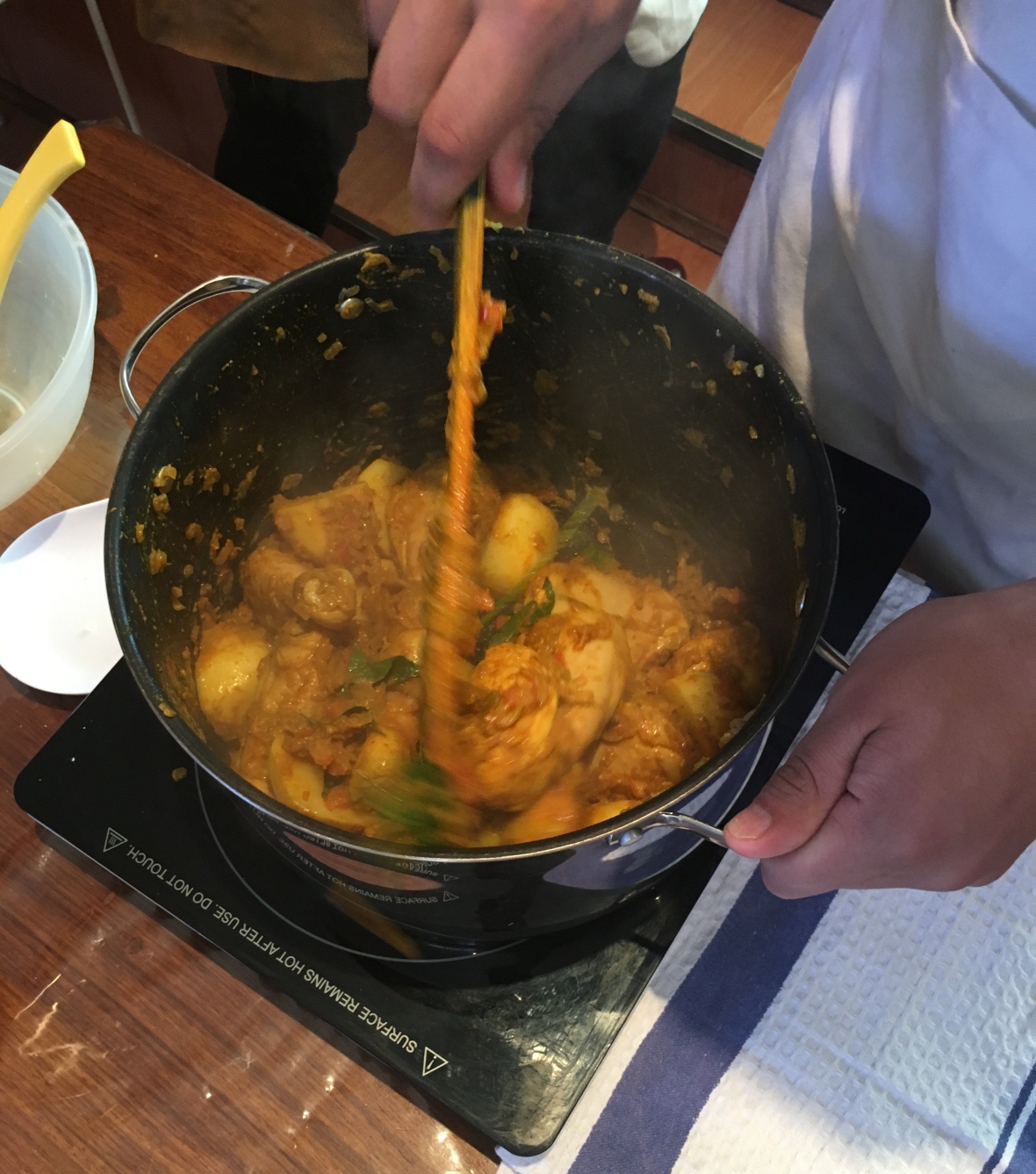
We then made dough for rootie, a traditional flatbread. This process involved a few steps. We first had to mix the dough and roll it out. Once it was evenly rolled out, we twisted the dough into a ball and let it sit for a while. After about an hour or so we rolled out the dough again into circles. They were then ready to be cooked on a frying pan with oil, flipping over every 30 seconds until it was done. After getting the rootie off the pan, we had to smash the rootie together to make it flakey. We put our hands facing each other on the edges of the rootie and clapped them together, smashing the rootie as a result.
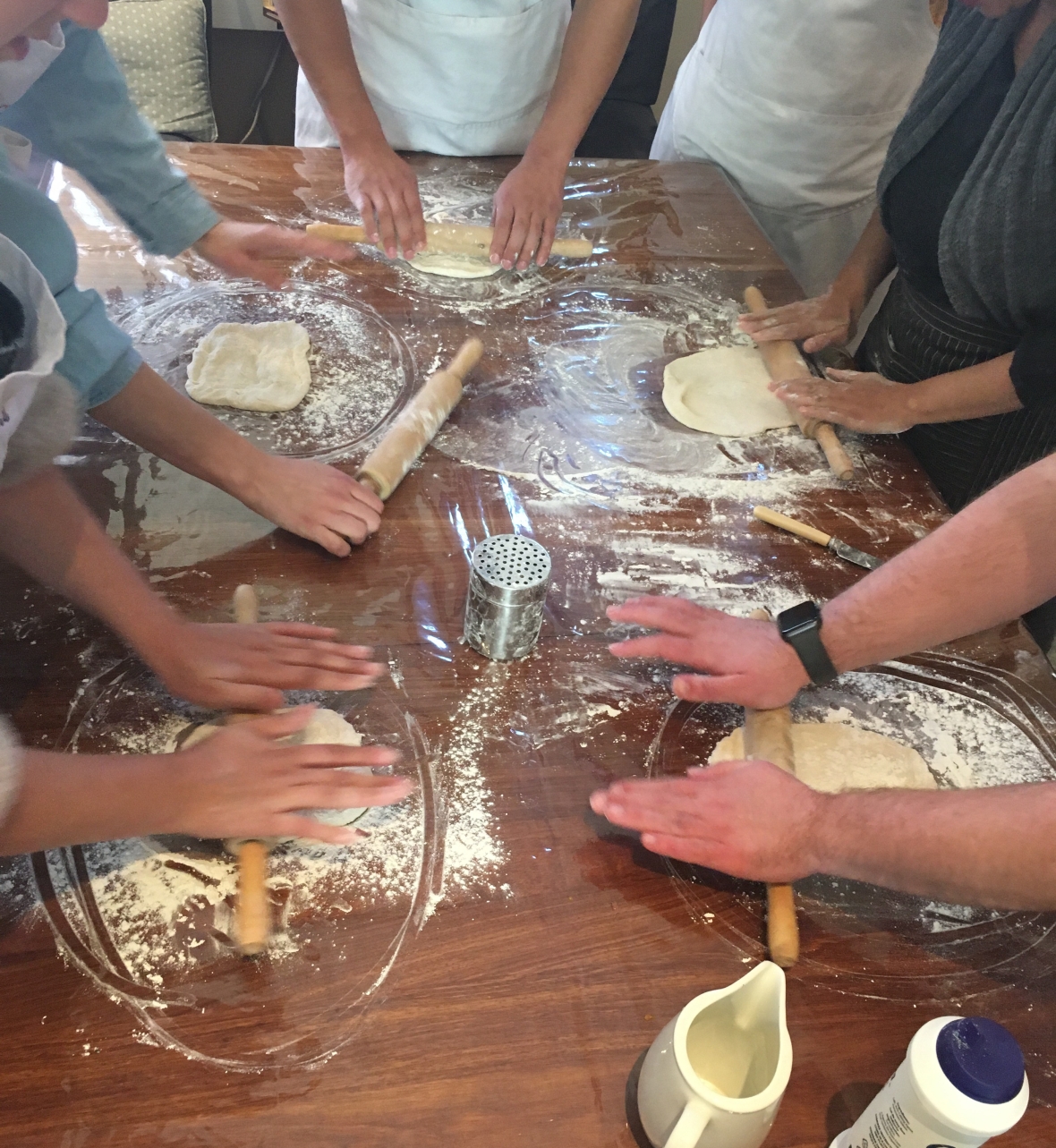
While the dough for the rootie was sitting, we were shown how to make daltjies, or chilli bites, and learned how to make samoosas. Daltjies are balls of fried dough with onion, spinach, and chillies. They seemed very easy to make and were absolutely delicious. They are usually eaten cold, but we ate them right out of the frier and with some different sauces. I had to stop myself from eating too many and filling myself up, otherwise I could have easily been happy eating those for the rest of the cooking class.

The samoosas were also delicious. These were triangular pockets filled with either a ground beef mixture or a potato mixture that were made. We were taught how to fold the samoosa pastries in order to create the perfect pocket and keep everything from falling out of the samoosas. It seemed tricky, but after a couple of tries I got the hang of it. Once all of the samoosas were folded, they were fried and ready to eat!
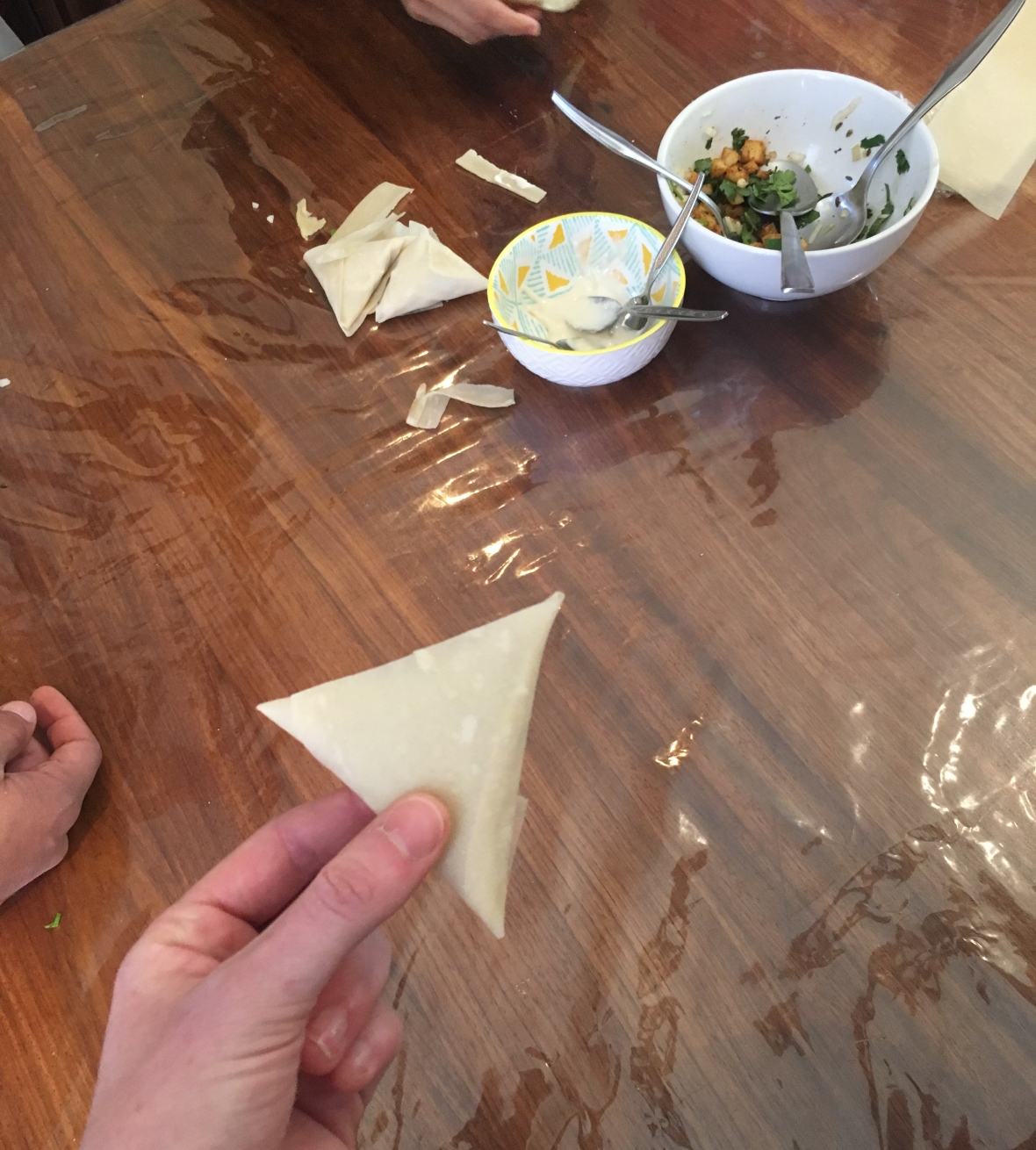
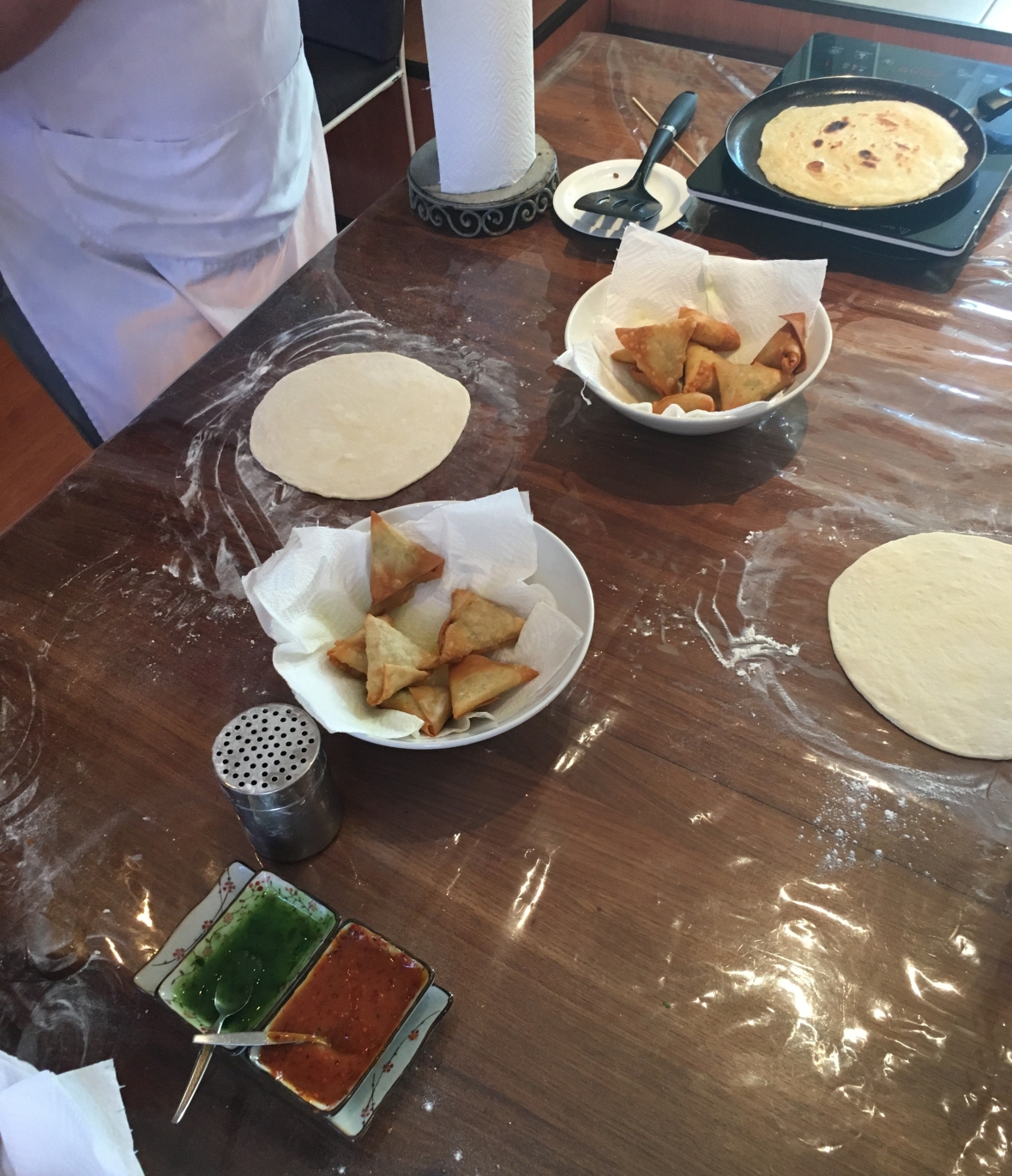
After snacking on the daltjies and samoosas, we moved into the dining room to try our rooties and chicken curry. These were served with white rice and a dish similar to a salsa that is used to make dishes more mild. All of the food was amazing and it was fun knowing that we helped make such a good meal. We were sent home with a recipe book and a packet of spices for the chicken curry, so hopefully I will be able to recreate some of the flavors and foods I learned how to make yesterday! At the very least, as long as I can master the daltjies, I’ll be happy
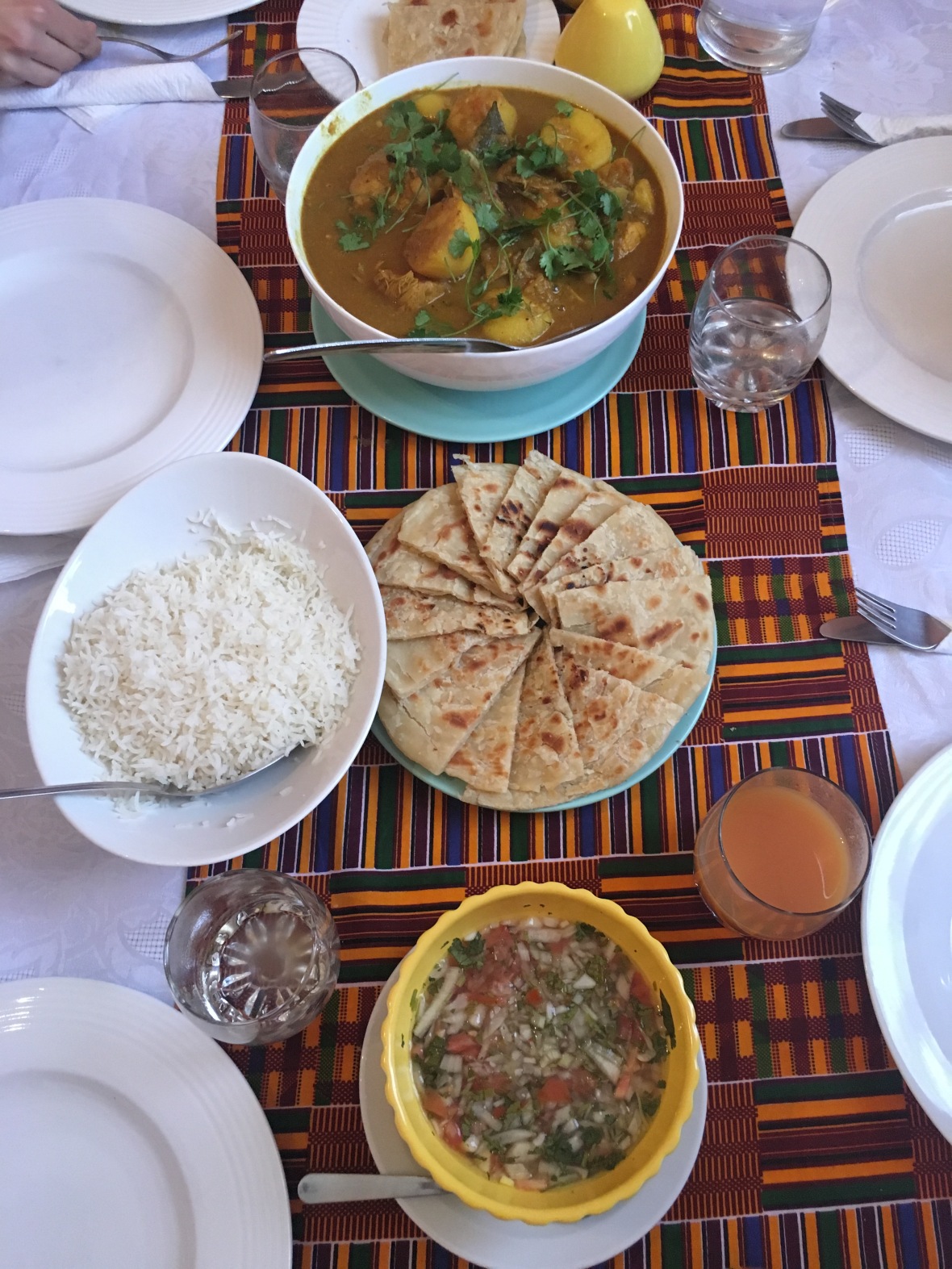
It was a really fun and educational visit to Bo-Kaap. Learning about the history and the current struggles of the area made the visit more special, rather than just going to see the colorful houses. Hopefully the government will understand their worries and help make Bo-Kaap a historical area in order to preserve the neighborhood and its culture, including its delicious foods.


Loved reading this Caitlin! Wishing I could have tried ALL of it too! You made it sound so good:).